
Jackson Browne is wandering the backstage caverns of San Francisco's Cow Palace looking a bit worried. "Where's Lindley?" he asks his road manager. "We're onstage in 15 minutes!"
A door at the end of the hallway is seeming blasted open by a torrent of beefy sustained lap steel licks. Inside, Lindley is squatting precariously, his Hawaiian guitar balanced on his knees. Crunching chords and crystal-clear single notes are pouring out of a crude-looking amplifier about a foot in front of his face.
"I want this one, Howard," David says to a large man who is smiling like a proud father. "Not this model, not one like this, but this one, OK?"
"It's just a prototype." Howard Dumble points out.
"Fine," nods Lindley. "I'll take it."
David Lindley, of course is notorious for using a vast array of exotic guitars from an instrument collection that number well over 100. But on the road, he uses only one brand of amplifier, a fact that makes Howard Dumble understandably proud.
As Lindley told Guitar Player in a July '77 interview, "I've got a lot of little amps, but on the road, I always use Dumble amps because they never break down. We went about getting the sound in those amps by taking an old Fender Deluxe to Howard Dumble and saying, 'We want this, but bigger and louder.' And Howard got the closest of anybody I've heard."
All the latest guitar news, interviews, lessons, reviews, deals and more, direct to your inbox!
I've got a lot of little amps, but on the road, I always use Dumble amps because they never break down
David Lindley
Howard Dumble grew up in Bakersfield, California, and began building transistor radios from scratch at age 12. He took up guitar at 16 (he later did his fair share of studio dates in Hollywood, which included working with songwriter Jim Webb), and in 1965 built a series of amplifiers for Mosrite that were used by the Ventures.
An extensive tour backing Buffy Sainte-Marie financed Dumble's first "out of the backyard and into a building" amp shop in 1968, in Santa Cruz, California. The following year, Dumble came out with his Explosion model amplifier (his original prototype still works), which later evolved into the Overdrive Special.
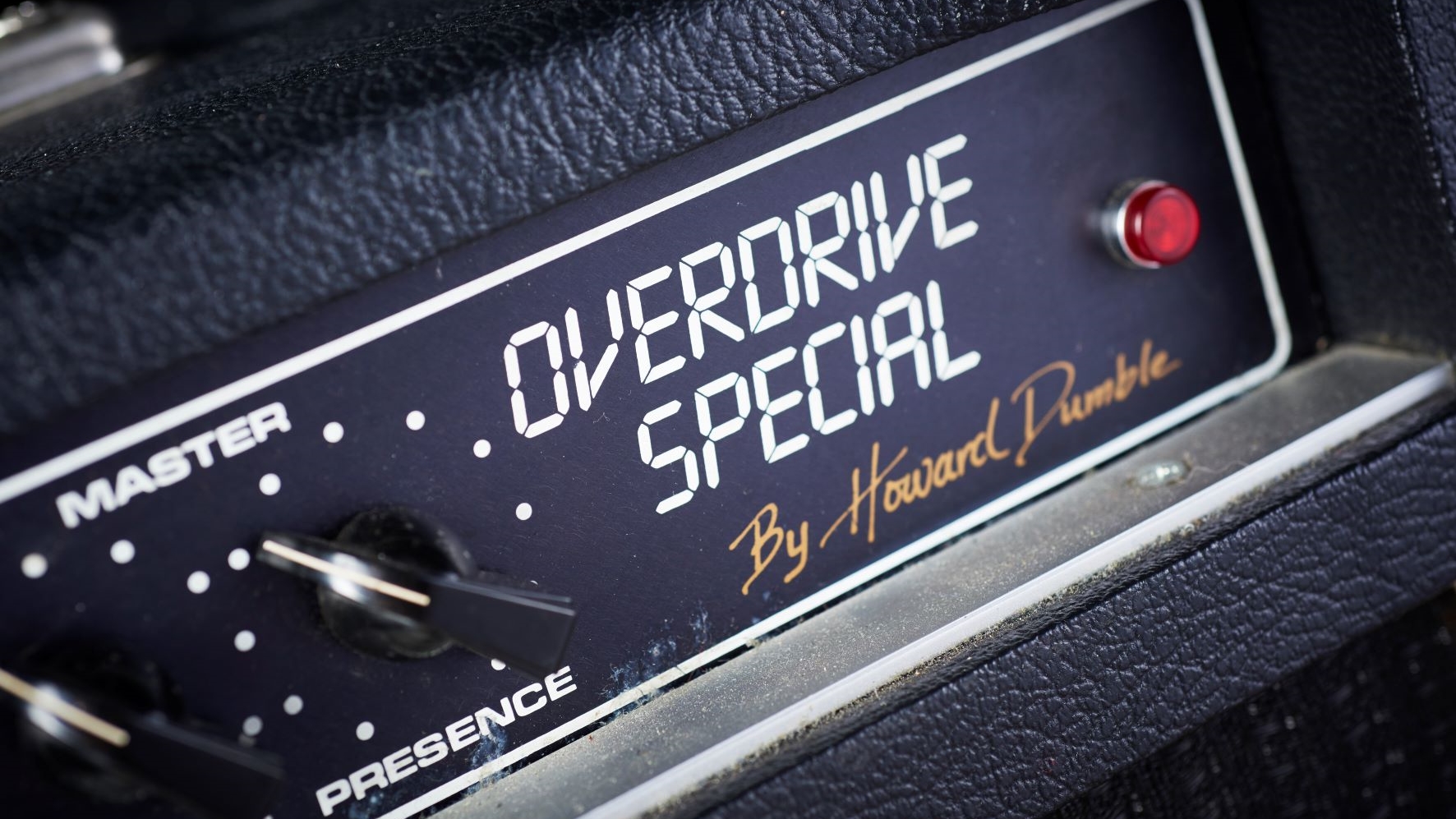
As well as the Big Tex reverb unit his line of amplifiers currently includes seven basic models: the Overdrive, the Steel-String Singer, the Winterland and the Dumbleland for bass and electric guitar, the rack-mount Phoenix, a no-frills 50-watt Dumbleman, and the Dumblelator.
From the beginning, he has remained a one-man operation, personally building every one of his amplifiers by hand.
In spite of their steep price tags – a standard 100-watt Overdrive head sells for $1,925; the Steel-String Singer and Dumbleland each go for $5,000 before options – Dumbles are always in demand, and Howard has his hands full keeping up with orders.
Besides Lindley and Browne, the impressive roster of Dumble users includes Larry Carlton, Bonnie Raitt, Graham Nash, Stevie Ray Vaughan, Jay Graydon, Ry Cooder, Tom Verlaine, Eric Johnson, Steve Lukather, Robben Ford, Dean Parks, Carlos Rios, The Beach Boys, Christopher Cross, Tiran Porter, Jimmy Haslip, Jerry Miller, Thom Rhotella, Randy California, Terry Haggerty, Rick Vito, Kenny Loggins, and many others.
The idea is to have lots of fun
Howard Alexander Dumble
In discussing what's so special about his amplifiers, Dumble uses aesthetic more than technical terms. "That's the bottom line," he stresses. "It's the emotional influence that's really important; technology is secondary – it's just a vehicle. The idea is to have lots of fun."
Improvisational specialist Henry Kaiser elaborates on what sets the Dumble apart from the rest of the amp crowd: "Number one, you could drop the thing out of a four-story building, replace any tubes that break, and it'll work fine. It does appear to be the most durably built amp possible.
“Number two, it seems to me that Howard, through a long intuitive working process, tunes the amps and designs by ear so that they're very sophisticated machines for producing a wide variety of tones and distortion colorations. Because of my specific avant-garde bent, I'm really interested in tone and timbre, and I need to have a really wide palette of tonal color available to me, and I've got about four times as many colors available on the Dumble. Any other amp sounds awful to me. I feel terrible if I play anything else – except for a Fender Champ."
In an August '77 Guitar Player feature, the late Lowell George of Little Feat was more succinct. "It's like a Fender made right," he said of his Dumble. "It's the best amp I've ever played through."
Your amps have a reputation for almost never breaking down. How do you build them with such durability?
Those are absolute guarded secrets. In fact, if you take the amplifier apart, you can't detect how I do it. I definitely have secrets that make the amp perform and last the way it does. With most companies, it's just a misapplication of technology. You don't have to destroy the product – you don't have to get a Variac and turn it up to 170 volts – to get good results. An extreme amount of attention is paid to every connection. Plus, I found which parts last and which ones don't.
What made you gravitate towards electronics in the first place?
I loved music, for one thing. Music's always been a passion. I used to listen to Les Paul and Mary Ford as a kid. Also, I come from an engineering family; my father developed one of the first automatic transmissions.
It wasn't hard to absorb the technology; it was just there to do. I also saw that I could make some bucks at it. I started making small pocket radios from scratch for the kids in school for $5 a pop. I was doing real well until one day everybody had one, and there were enough radios in the class that you could hear the local rock station at a small din through all the earpieces. So, the teacher finally busted me.
I definitely have secrets that make the amp perform and last the way it does
Howard Alexander Dumble
What inspired you to first build an amp?
I was a junior in high school, and this guy named Jack Smith came over and wanted me to build a piece of equipment for the junior baseball association. He said that he had access to a "mountain of parts" – I said okay!
We went down to this big warehouse, and there were heaps of parts, so we gleaned as many as we could – all free. We built this huge 200-watt power amplifier so they could announce to nine baseball diamonds.
As I understand it, it still works today. Then, Jack and I made some Dual showman-type amps, although we couldn't get Fender transformers – they were very tight about what they'd send you – so we used David Hafler transformers, which made the amp sound quite extraordinary.
Prior to building your own amps, had you taken apart other amps such as Fenders and Gibsons?
I can draw some of the those schematics from memory [laughs]. Of course, I had to absorb other approaches. In fact, my old Fender mods I did in the late '60s were exactly the same as the schematics a lot of the later high-gain amplifiers used.
My old Fender mods I did in the late '60s were exactly the same as the schematics a lot of the later high-gain amplifiers used
Howard Alexander Dumble
How did you come to make amps for the Ventures?
I was an 18-year-old kid in school in Bakersfield, and I went to see Semie Moseley, who was the only person I had access to there. I walked in and just bold-faced said, "I've got something that sounds like nothing else. You better hear it." And it flipped him out; he said, "This is the best thing I've ever heard."
He offered to go in with me to build 10 amplifiers. He bought the parts and paid me $90 a week – for about four weeks, and then I had to work for free. But I still got to build 10 amplifiers on a production basis when I was only a kid. They were called Mosrite amps, but they were my design. Actually, I built 11, so I still have the original one I built.
The Ventures played through them and were really interested, but it was a little too much rock for them. They wanted me to go into business with them, but I decided against it, and went back to playing in studios and in rock bands.
They were called Mosrite amps, but they were my design
Howard Alexander Dumble
Did your early amps have certain qualities lacking in commercially available amps of that period?
Yes, I definitely made sure they had more frequency bandwidth. One thing I noticed about the early guitar amps was that they were real limited, especially in the lower end. But you have to be careful to make sure you still keep the proper midrange and treble response. I found that out early on.
You can't build a hi-fi circuit and expect it to be a good guitar amp – it just doesn't work out. You need a whole different response curve. But I did notice that if I put a little more low end into the preamp circuitry, it was much more tasteful and fun to play.
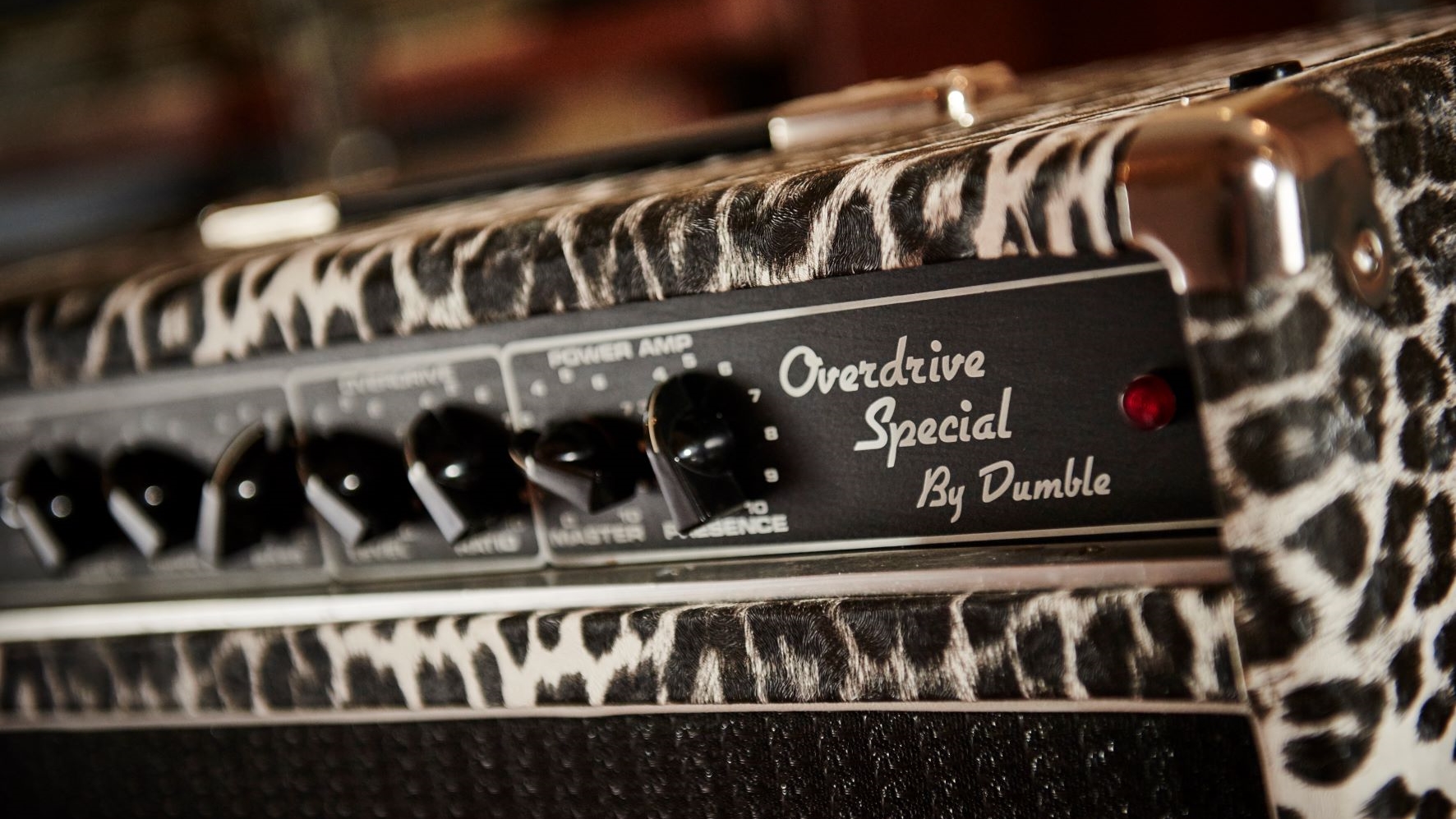
Once you got started, did a Dumble philosophy evolve?
I try to be flexible. I've always been aware that whatever I make has to be crafted with the best intentions. Never have anything shoddy. Always make sure that it works and looks perfect. The actual techniques I use to get the sound that I go after have evolved extensively. It's a growing process. That's the toughest thing about staying with one thing. You're always thinking of new ways to do it. Basically, I've kept the Overdrive the same but the other models are open to flexibility.
I've always been aware that whatever I make has to be crafted with the best intentions
Howard Alexander Dumble
What changes did the Explosion undergo before it became the Overdrive Special?
The active circuitry changed quite a bit, and the tone circuitry did also. But the concept of processing the signal post preamp stayed the same. Most other high-gain amplifiers use a pre-preamp gain boost, but I broke away from that quite early in the late '60s. I found that trying to build the signal up before the preamp had a tendency to really overload the preamp, and you got nonharmonic tones and a very unmusical end result.
Plus, you ran into a lot of vacuum-tube problems with harmonics. So, what I wanted to do was get all that wonderful oomph and beautiful sustain and harmonic richness without the electronic troubles.

Were you making what was to become the Overdrive before you made the Steel-String Singer?
The Steel-String Singer came later, but I actually started making a series of amplifiers called the Dumbleland in about '66, and I still make them. That was the forerunner of the Steel-String Singer. I didn't change a whole lot about that; it was a design way ahead of its time. It was too much power and too silky clean for people. It's perfect for Stevie Ray, though. He has a hard time playing an Overdrive.
Why is the Overdrive so sensitive?
It's a different kind of signal handling. In the Overdrive, I approach gain levels that are extremely intense; within the linear region, I have a signal gain capability of one million. So if you stuck 10 microvolts in, you'd get 10 volts back. And I do it with stability, and it's still very musical.
The best way to approach an Overdrive is real slow. Walk up to it, look at the knobs, have it turned down real low, and then get a feeling for it. Learn what to do with your fingers to make it respond well. If you walk right up to it, it has a tendency to absolutely frighten some people.
The secret control on the Overdrive's panel section is the ratio control, which controls how much overdrive is fed back into the circuit. If you turn that up, it's Rock City.
How different is the Overdrive Special you customized for David Lindley from a standard model?
I might have changed the value of a capacitor to some extent, so that it has a different treble response, but the circuitry is basically the same.
Lindley says that for certain sounds he's looking for, you sometimes borrow his guitar and Dumble for the weekend to match the amp to the guitar?
That's true. The amplifier responds so differently to each guitar that to get some effects, I need to use the player's guitars, instead of my own. That's one of the great things about the amplifier; it doesn't modify any guitar into any one sound or homogenize it. It expands whatever you start with.
The amplifier is a real important part of the sound regeneration system, but it needs to be very responsive to whatever the guitar is delivering. The philosophy I try to keep in the amplifier is that whatever you can hear in your head, this will help you get it.
That's one of the great things about the amplifier; it doesn't modify any guitar into any one sound or homogenize it. It expands whatever you start with
Howard Alexander Dumble
Stevie Ray Vaughan calls his Steel-String Singer the "King Tone Consoul."
There are some different things about Stevie's. His is set up more like a bass amp, modified to accommodate the guitar range. It's not the usual lead guitar "Singer" approach. One thing he liked was that he could turn the volume control all the way up and it didn't distort – it just got louder.
He does make it distort sometimes because he has about 50 megatons of pressure when he attacks the strings [laughs]. He gets an incredible amount of signal out of his guitar, and most amplifiers can't take it. He did his first album with a bass amp I'd made for Jackson Browne.
Some players describe Dumbles as different, more powerful, more durable more efficient versions of a Fender Deluxe
That's a good way to describe it – in a limited fashion. There are some great qualities to a small Deluxe. You get a great harmonic structure at a small acoustic volume. It's real pleasing, especially when you're playing by yourself. But that sound is not convertible into a group ambience – it's gone.
To get the result I want, I have to use unique circuitry
Howard Alexander Dumble
So, in the respect that I try to get something comfortable and very musical, only in a bigger fashion, that's a good analogy. But the circuitry is not even close. I use vacuum tubes, and transformers and knobs, but the similarity stops there. To get the result I want, I have to use unique circuitry. It's my tone circuits and coupling circuits and the way I process phase-inversion.
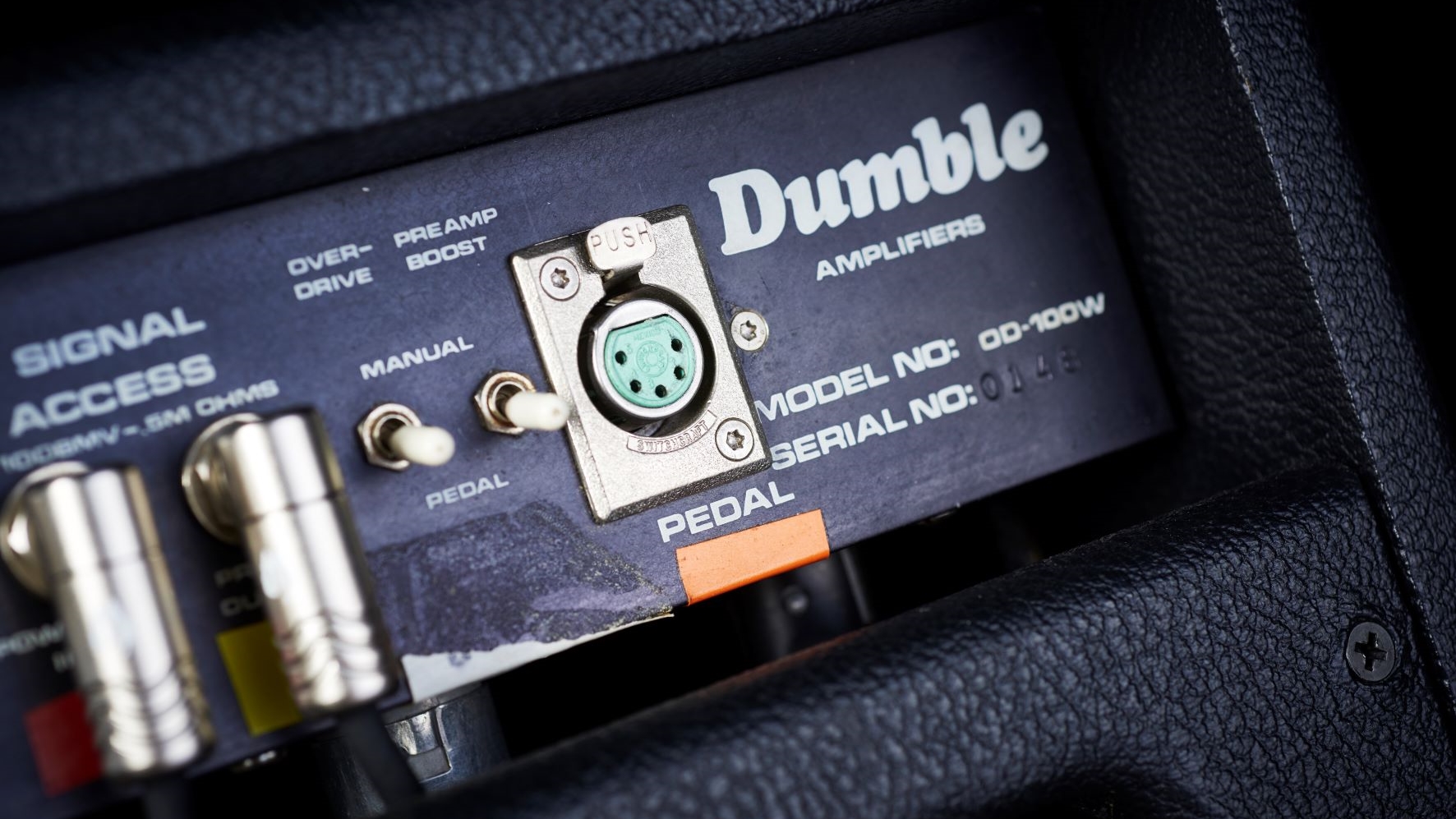
Can you "Dumble-ize" a Fender amp to the point that it shares the Dumble philosophy and sound, or would it be a compromise?
It's a compromise. The actual physical construction of the Fender limits what can be done. In fact, after the last Steel-String Singer mod I did to David Lindley's amps, he no longer uses the Fender Bassman I Dumbleized for him. He wanted this luscious transparency and response – like floating in white clouds – and I came up with special circuitry.
I can use a Fender chassis, but you have to rip everything off of it, fill in all the holes, and re-drill it. They're just a little bit too squashed. A distance of half a centimeter makes a big difference in the way something sounds. It's a science involved with what's called circuit constants.
Instead of a single bright/deep switch, most of your amps have separate bright and deep switches. Can you use both at the same time?
Oh, you bet. It gets luscious low notes that you could float on and beautiful, crystalline highs that are silky as glass.
How many watts are the various models?
The overdrives are 100 watts, but they're switchable down to 50, and I do make a special 150-watt Overdrive, which is a lot of fun. The range in power goes from a 25-watt recording amp called the Hotel Hog up to the 450-watt Winterland, named after the concert hall in San Francisco.
Could there be an ultimate amp for you, or are the Overdrive and Steel-String Singer too distinctive to be combined?
Well, the Phoenix series is where I've done that – so you can combine things – because it's a rack-mounted affair. You can buy all the separate preamps, with or without overdrive, and a choice of 50-, 100-, or 150-watt power amplifiers, and hook them together. The overdrive section is expanded – instead of two overdrive controls, you have four.
I divide speakers into two classifications: the efficient and the low-efficient. Both are very useable
Howard Alexander Dumble
After experimenting with various speakers, what do you favor?
I've gone with everything. There are a lot of things I still like. The most versatile is the EV. But all manufacturers, including Altec and JBL, make wonderful speakers that do specific jobs other speakers can't do. I divide speakers into two classifications: the efficient and the low-efficient. Both are very useable.
Low efficiency speakers are things like Celestion and Jenson and PAS. Usually because of the physical construction, they don't get the same acoustic level per watt as the Altecs, JBLs, and EVs do. There's an advantage to that, because you can make the amplifier work harder to get the same acoustic level, and a whole different kind of harmonic structure results.
I love the sound of JBLs, especially for chords, but I had a lot of trouble with 4" voice coil not traveling in a linear fashion. The actual coil would short out against the magnet structure. The Altecs didn't do that, so I was using them up until '79, when EV started coming out the the EVM series.
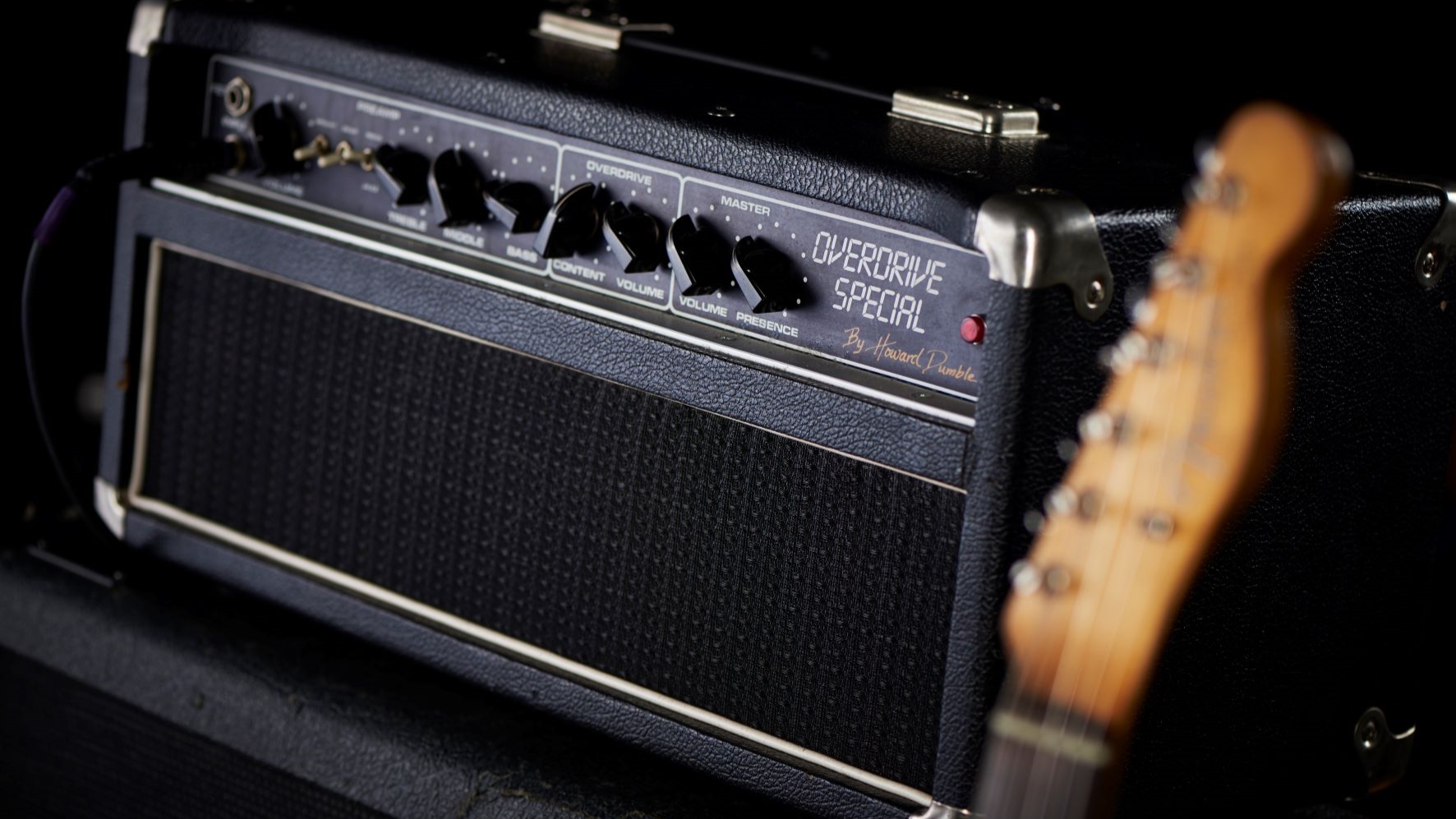
How does your philosophy on speaker enclosures contrast with other companies?
I think mine's different. I just don't believe in a baffle board with a couple of sides. Everything is designed to respond tonally. Even my open-back enclosures use air to the optimum. It's an ongoing process; I'm still finding out things that are useful.
There's a definite technique to developing enclosures. Instead of increasing the output all from the front by feeding more watts in, I designed a special series of open-back enclosures so that there's actually an air pole inversion process – I make the air respond in an in-phase relationship, both in front and in the rear of the enclosure. So, from the same amount of speakers, it's almost a doubling of sound.
The low end is absolutely luscious. You feel like you're floating on a football field filled with marshmallows
Howard Alexander Dumble
Does that change the tonal quality?
Yes. The low end is absolutely luscious. You feel like you're floating on a football field filled with marshmallows. And it gives a singe to the midrange that puts solos right out there. It works great for chords and solos, but especially well for slide. It's the kind of enclosure that Lindley and Lowell George used.
Is there a single emotional aim you're shooting for, or many?
It's a whole panorama. I don't believe in being confined. There are hundreds, perhaps thousands or millions, of valid guitar tones. When the air becomes electric, that's the right sound, no matter what the one is. It's that sound exciting the senses.
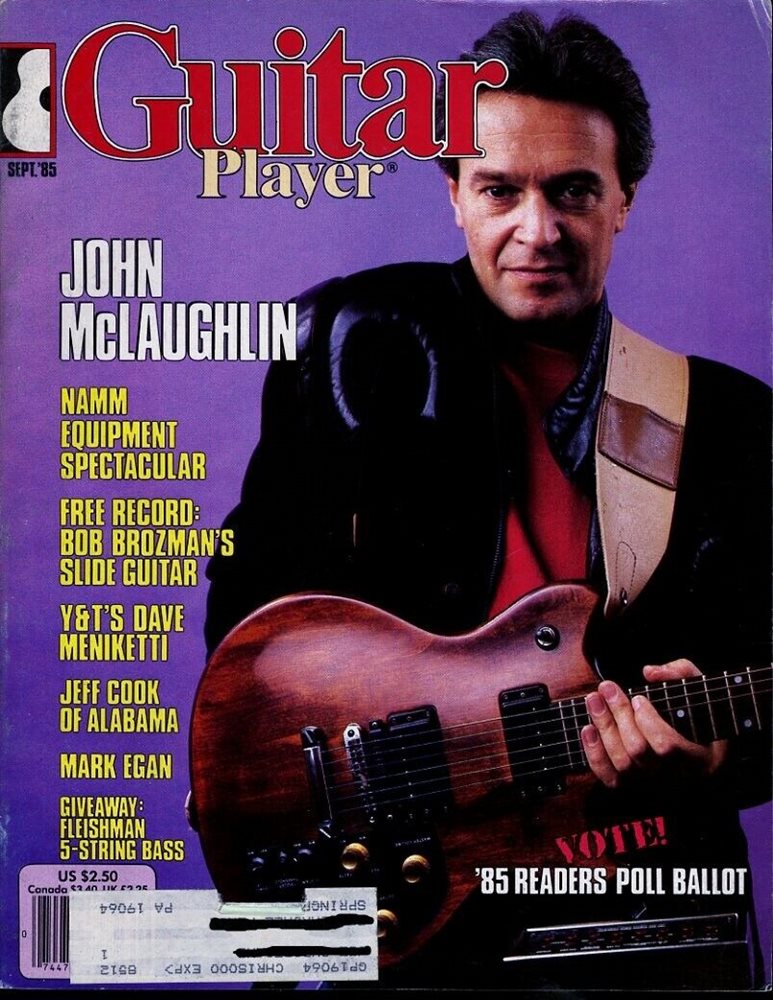
Dan Forte was Assistant Editor at Guitar Player 1976-1978 and then from 1983-1989, where he became Editor At Large and interviewed Stevie Ray Vaughan, Mark Knopfler and George Harrison among others. He later became Editor At Large at Guitar World and is currently Editor At Large at Vintage Guitar magazine.
